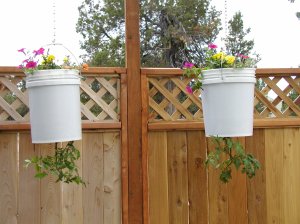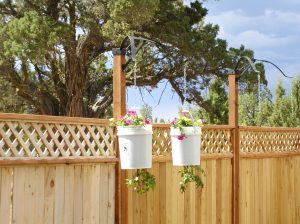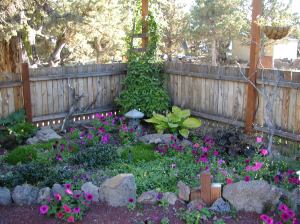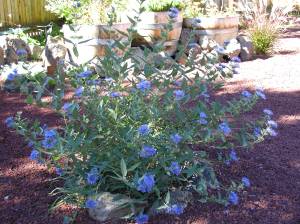Hens and Chicks in my tree ring garden.
Hens and Chicks, or Sempervivum, as they’re otherwise known, are a hardy succulent. They are popular as ground cover as well as in rock gardens. Hens and chicks take minimal care and can grown in very little soil. They are perfectly placed in shallow dirt that accumulates in rock walls or mounds of boulders as their lush green color adds a nice contrast.
Hens and Chicks nestled in the rocks.
Hens and chicks do well in areas that receive very little water and lots of direct sunlight. But, they do equally well in gardens that are partially shaded and are watered regularly.
This Hen is quite crowded by some rather large chicks.
Propagating Hens and Chicks is quite easy. When the chicks grow they come on as little “buds” on the side of the Hen. Soon, they sprout their own roots and are ready to be moved. Hens and chicks have shallow root systems and to propagate them you simply grasp the little chick and gently pull it away from the hen. This will disengage the single root of the chick. The chick is then ready to be planted. Simply scratch a shallow trench, place the chick’s root inside and cover with soil. Give the chick a little water and soon it will be having chicks of its own.

This hen went a little crazy in the chick department.
When a hen is approximately 3 to 4 years old it will send up a shoot which can reach 15 inches tall. This shoot will burst with colorful blooms which can last a month or more. Then, when it’s finished blooming, the hen will die. Sort of a last hurrah.
A hen in bloom – beautiful!
A garden full of hens in bloom is beautiful. And, although the hen dies when it is finished blooming, don’t despair; simply pluck the spent hen out of the ground and replace her with a fresh chick. The chick will soon grow and fill in the vacant spot.
Attributes of Hens and Chicks (Sempervivum)
- Low maintenance
- Drought tolerant
- Sun tolerant
- Ground cover
- Deer and rabbit tolerant
- Can grow in shallow, sandy soil
Hens and chicks can be found in most nurseries and gardening centers as well as through seed and plant catalogs such as Dutch Gardens.
Happy gardening!





















You must be logged in to post a comment.